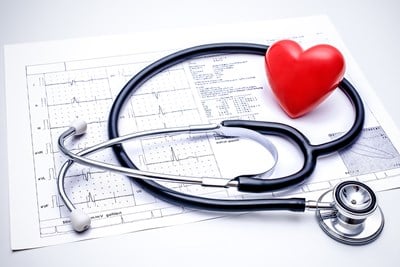A heart attack occurs when the blood flow to the heart becomes restricted. Medical experts also refer to this condition as a myocardial infarction. Heart pain is an indication that a person is having a heart attack, but there are many other symptoms.
Some of the other symptoms of a heart attack include: anxiety, coughing, jaw pain, shortness of breath, nausea, fainting and vomiting. It is also important to note that the symptoms may differ between men and women. For example, women are less likely than men to experience heart pain.
Symptoms
Some of the symptoms of a heart attack can seem mild, which is why many people postpone seeking medical treatment. However, millions of people have died because they were experiencing heart pain and many other symptoms of a heart attack, but failed to get treatment. If a person suspects that he or she is having a heart attack it is best to go to the emergency room immediately.
Risk Factors
A heart attack is something that can occur suddenly, but most people have risk factors beforehand. People who have kidney disease, diabetes, high blood pressure, smoke, have high cholesterol and eat a diet that is high in saturated fat are more likely to suffer from heart pain. Males, older people and those who have a family history are also more likely to suffer from a myocardial infarction.
Prevention
Since heart attacks can potentially be fatal, much emphasis has been placed on preventing them. The focus of heart attack information is to prompt people to make the lifestyle changes. The following preventative measures can be undertaken to delay the onset of heart disease or as a recovery path after a previous heart attack as preventative measures for possible future heart-related issues.
- Lowering Cholesterol Levels
There has also been a-lot of heart attack information given about high cholesterol. When a person's LDL or bad cholesterol level is elevated, it causes plaque to form and stick to the arteries. That plaque can also build-up in the heart and cause a myocardial infarction. HDL or the good cholesterol helps clear up the arteries and prevent plaque from forming in the heart. People should focus on raising their good cholesterol while lowering their bad cholesterol. - Maintaining a Healthy Weight
People who are obese are also more likely to suffer from a myocardial infarction. Being significantly over one's ideal body weight can cause heart pain because the extra weight puts pressure on the heart. Those who give heart attack information have stated that people who lose as little as ten or fifteen pounds can reduce their chances of developing a myocardial infarction. - Eating a Proper Diet
Heart attack information books also place emphasis on diet and exercise for eliminating the risk factors for a myocardial infarction. People should make sure that they consume a diet that is low in saturated fat and cholesterol and high in fruits and vegetables. It is also important to make sure that one consumes at least 2-3 servings of fish or seafood per week because they contain omega 3 fatty acids, which promote heart health. - Exercise
Exercise helps reduce a person's chance of getting a myocardial infarction because it strengthens the heart. Health experts recommend exercising 3-5 days a week for at least 30 minutes at a time. Running, walking, skating and dancing are great exercises that help keep the heart strong and healthy. - Reduce Stress
Experts who share heart attack information also place emphasis on stress reduction. Stress puts extra strain on the heart and causes it to work harder, which can lead to an attack. Breathing deeply, listening to music and just taking a few moments out of the day to unwind can help reduce a person's chance of developing a myocardial infarction.
Heart attacks are among the top-killers and are something that everyone should be concerned about. People who have heart attack information know more about the steps that they can take to prevent one.



